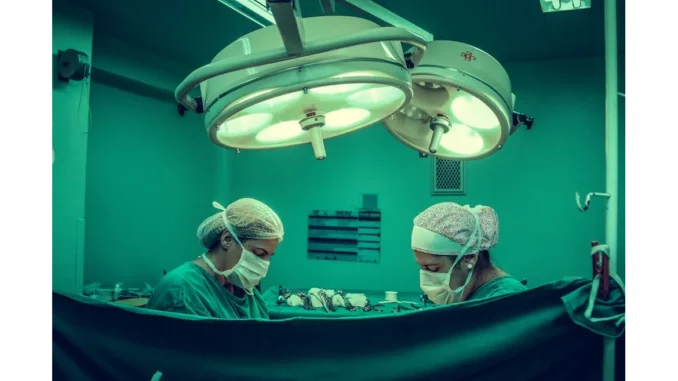
In the realm of medical innovation, the intersection of digitalisation and artificial intelligence (AI) is ushering in unparalleled changes, particularly within the fields of orthopaedic surgery and rehabilitation. The initial volume of the Research Topic: ‘Digitalisation and AI in Orthopedic Surgery and Rehabilitation 4.0’ laid a robust foundation, exploring the transformative potential of technology in healthcare. With the introduction of the second volume, this exploration deepens, offering fresh insights and glimpsing future possibilities in this fast-evolving field.
To delve deeper into this dynamic intersection, I engaged in a conversation with Dr Emily Griffith, an orthopaedic surgeon and a significant contributor to the second volume. Her experiences and insights offer a captivating perspective on how digitalisation and AI are reshaping orthopaedic care. “Digitalisation has truly revolutionised the way we approach orthopaedic care,” Dr Griffith remarked, her enthusiasm evident. “The COVID-19 pandemic accelerated the adoption of digital tools, notably telemedicine, which has now become an integral component of patient-surgeon interaction. It’s remarkable how we can maintain continuity of care without the necessity of the patient’s physical presence.”
During our discussion, Dr Griffith emphasised that telemedicine serves not merely as a temporary fix but as a transformative tool that enhances patient-centred care. She explained how digital platforms facilitate improved communication, not only between patients and surgeons but also within multidisciplinary teams. This, she noted, is essential for comprehensive treatment planning and execution. One of the most exciting developments she shared was the integration of sensor technologies and augmented reality into surgical procedures. “These technologies are still in their early stages, but they hold immense potential,” she observed. “Augmented reality, for instance, can superimpose crucial data during surgery, enabling more precise and informed decision-making. It’s akin to having a sophisticated GPS for surgery.”
Our conversation naturally transitioned to the role of AI, machine learning, and deep learning in orthopaedics. Dr Griffith is particularly optimistic about the potential of these technologies to enhance diagnostic accuracy and personalise treatment plans. “AI can process vast amounts of data far more quickly than any human, identifying patterns that can lead to earlier and more accurate diagnoses. This is where the future lies—data-driven, personalised care,” she asserted. Despite the promise, Dr Griffith candidly acknowledged the challenges that accompany these technological advancements. “The transition to fully integrated digital solutions is complex. We need extensive research and validation to ensure these technologies are safe and effective for clinical use. It’s not just about having the tools; it’s about using them correctly.”
Our discussion also encompassed the role of robotics in surgical environments. Dr Griffith mentioned how robotics, whether as surgical assistants or independent operatives, are being assessed for their potential to enhance surgical outcomes. “Robots can perform repetitive tasks with precision, reducing human error. However, the human touch remains irreplaceable, and the challenge is finding the right balance between machine efficiency and human empathy.” Wearable sensor technologies, another area of interest, are proving invaluable in monitoring and rehabilitation phases. “These devices provide real-time data on a patient’s recovery, allowing us to tailor rehabilitation programmes more effectively. It’s about empowering patients to take charge of their recovery, with us guiding them every step of the way,” she explained.
Dr Griffith further shared her thoughts on the impact of digital advancements in medical education and training. “Virtual and augmented reality are transforming how we train healthcare professionals. Simulations offer hands-on experience without the associated risks, and they’re also being used to educate patients, enhancing their understanding and engagement in their care.” As our conversation concluded, Dr Griffith reflected on the broader implications of these technological advancements. “The future of orthopaedic care is incredibly exciting. We’re moving towards a more personalised, efficient, and patient-centred approach. But it’s crucial that we continue to engage in research and dialogue, ensuring these innovations truly benefit patients.”
In this context, the second volume of the Research Topic: ‘Digitalisation and AI in Orthopedic Surgery and Rehabilitation 4.0’ is not merely a continuation but an expansion of the conversation. It invites contributions that explore theoretical frameworks, engineering innovations, and applied research, charting the trajectory of orthopaedic care in the digital age. As Dr Griffith eloquently articulated, “We’re at the beginning of a journey with enormous potential. The key is to harness these technologies wisely, ensuring they serve to enhance, rather than replace, the human elements of care that are so integral to healing.” In the ever-evolving landscape of medical technology, the convergence of digitalisation and AI presents a path forward that promises to revolutionise orthopaedic surgery and rehabilitation, fostering an era of advanced, patient-centric healthcare.


Be the first to comment